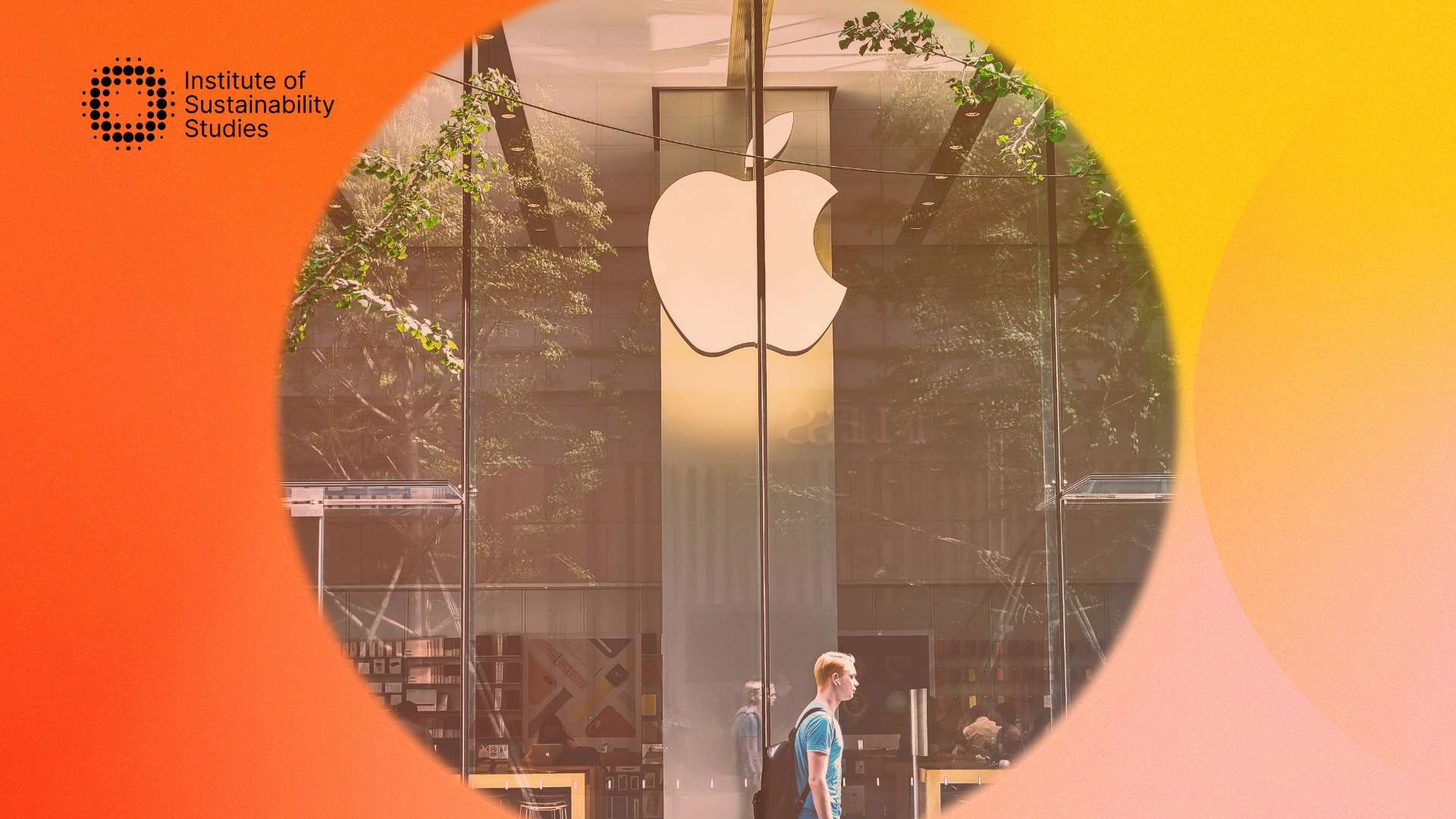Apple has announced a 60 percent reduction in greenhouse gas emissions across its value chain since 2015—an important milestone in the Company’s sustainability journey. This achievement reflects the company’s progress toward its 2030 target of becoming carbon neutral across its entire business, supply chain, and product lifecycle. However, it also demonstrates what’s possible when corporate sustainability is treated as a business priority.
Clean energy and supplier accountability lead the way
The most significant reductions in Apple’s emissions footprint have come from its manufacturing supply chain, which accounts for more than half of its total emissions. Between 2020 and 2024 alone, manufacturing-related emissions were halved, from 16.1 million tonnes to 8.2 million tonnes.
This success is due in large part to Apple’s assertive Supplier Clean Energy Program. The company now reports 18.9 GW of renewable electricity capacity in its global supply chain (up 15 percent from the previous year), preventing more than 21.8 million metric tonnes of emissions in 2024 alone.
Moreover, Apple is working directly with suppliers to improve energy efficiency. This has enabled them to avoid another 2 million tonnes of emissions through optimisation efforts and innovations in clean manufacturing processes, such as F-GHG abatement in display production.
Recycled materials and circularity in design
Apple’s strategy is not just energy-focused; it’s material-intensive. The company is making tangible progress on its commitment to use only recycled and renewable materials in its products.
Highlights include:
- 56 percent of cobalt in Apple batteries now comes from recycled sources (up from 25 percent in 2022).
- 100 percent recycled rare earth elements are now used in all magnets across Apple products.
- 24 percent of lithium used also came from certified recycled sources.
- The MacBook Air with M3 is now made with over 55 percent recycled content.
This growing reliance on recycled critical materials not only reduces Apple’s environmental footprint but also strengthens its position in a market facing increasing demand and volatility for rare earth and critical resources.
Turn sustainability into a performance advantage with training that helps your organisation reduce costs
Zero waste and sustainable packaging
Apple is also moving decisively on waste and packaging. In 2024, the company:
- Achieved a 42 percent water reuse rate in its Supplier Clean Water Program.
- Diverted 600,000 metric tonnes of waste from landfills.
- Rolled out its first 100 percent fibre-based packaging in new Apple Watch and Apple Vision Pro products.
The company is also scaling innovations such as reusable air filters in its data centres, now saving 25 tonnes of waste annually while improving energy efficiency by 35 percent. Apple is extending these technologies industrywide – another sign of how leadership can influence broader systems change.
Conclusion: The time to build sustainability capability is now
Apple’s sustainability journey sends a clear message: meaningful impact requires meaningful capability. Its progress, driven by supplier collaboration, data transparency, and innovation, is the result of strategic alignment and action embedded across the entire business.
As climate risks intensify, supply chain pressures grow, and reporting standards tighten, organisations can’t afford to wait. Now is the time to equip teams with the knowledge to act, embed sustainability across functions, and turn ambition into measurable outcomes. Explore our company-wide sustainability education programmes and learn how to make sustainability a driver of business growth and resilience.










